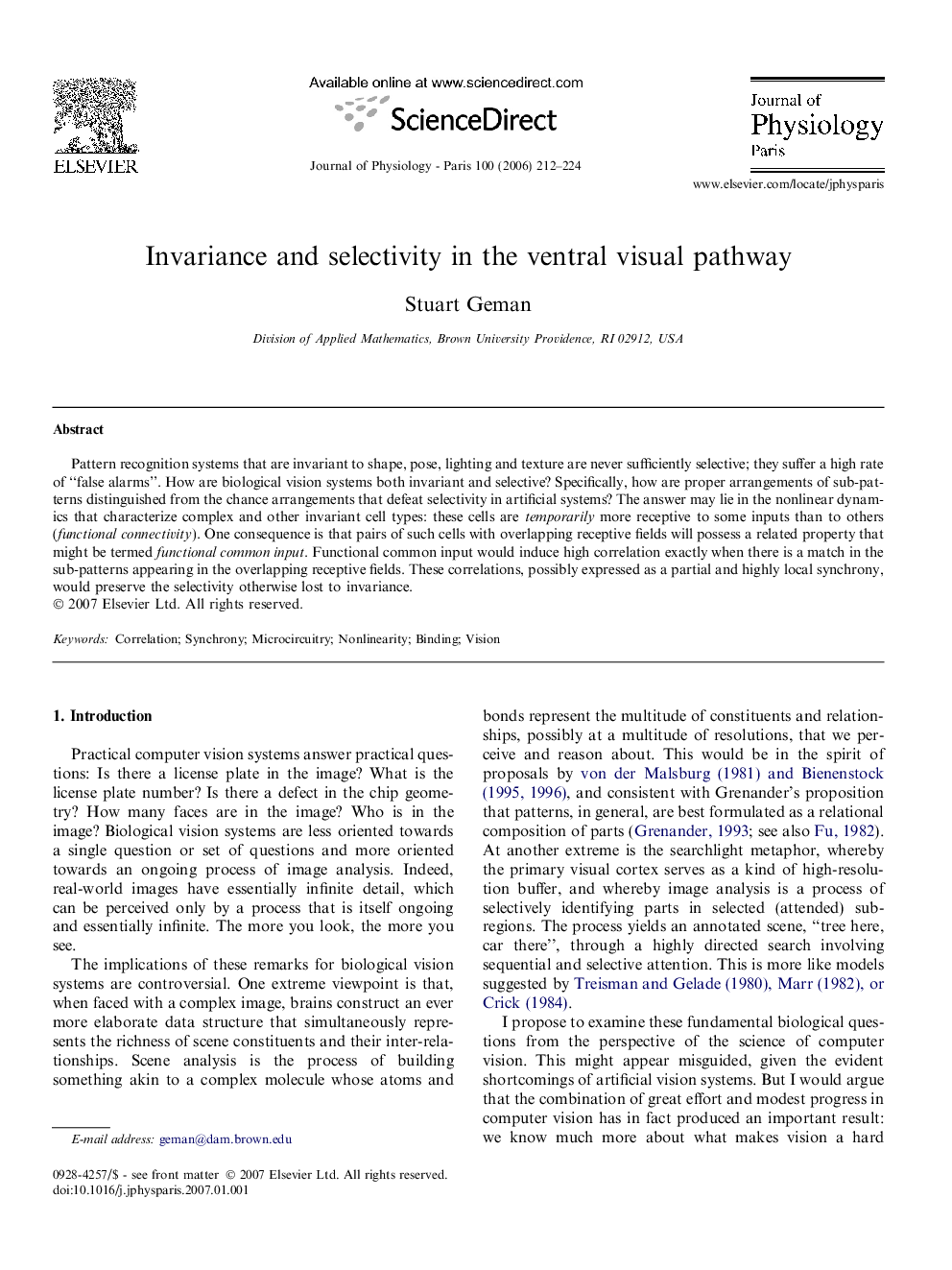| Article ID | Journal | Published Year | Pages | File Type |
|---|---|---|---|---|
| 2842464 | Journal of Physiology-Paris | 2006 | 13 Pages |
Pattern recognition systems that are invariant to shape, pose, lighting and texture are never sufficiently selective; they suffer a high rate of “false alarms”. How are biological vision systems both invariant and selective? Specifically, how are proper arrangements of sub-patterns distinguished from the chance arrangements that defeat selectivity in artificial systems? The answer may lie in the nonlinear dynamics that characterize complex and other invariant cell types: these cells are temporarily more receptive to some inputs than to others (functional connectivity). One consequence is that pairs of such cells with overlapping receptive fields will possess a related property that might be termed functional common input. Functional common input would induce high correlation exactly when there is a match in the sub-patterns appearing in the overlapping receptive fields. These correlations, possibly expressed as a partial and highly local synchrony, would preserve the selectivity otherwise lost to invariance.
